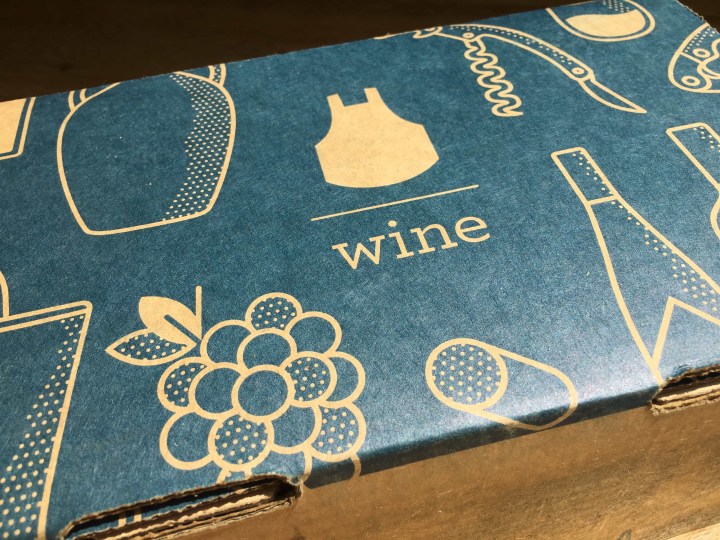
Blue Apron Wine is a subscription for people who love trying new wines as much as they love great food. You may be familiar with the Blue Apron Meal Delivery Kit subscription, which sends boxes of fresh ingredients to make exciting meals at home. The wine subscription is separate from the meal subscription, but it’s designed to complement it.
Here’s how it works: every month, for about $11 per bottle ($65.99/month, including shipping and tax), Blue Apron sends you 6 bottles of wine, plus tasting notes and pairing recommendations. The wines are selected to pair perfectly with the meals in the Blue Apron kits. The bottles are 500 ml, or 2/3 the size of a standard bottle, which, in addition to being adorable, means that you and your dining partner can enjoy your entire bottle with your meal without regretting that additional glass needed to finish a standard-sized bottle.
Blue Apron pairs with wineries around the world to bring a wide range of new and interesting wines to you each month. I love wine, and I love food, and I love everything about the idea of this subscription.
DEAL: You can try out Blue Apron dinners for $50 off your first two boxes with this link.
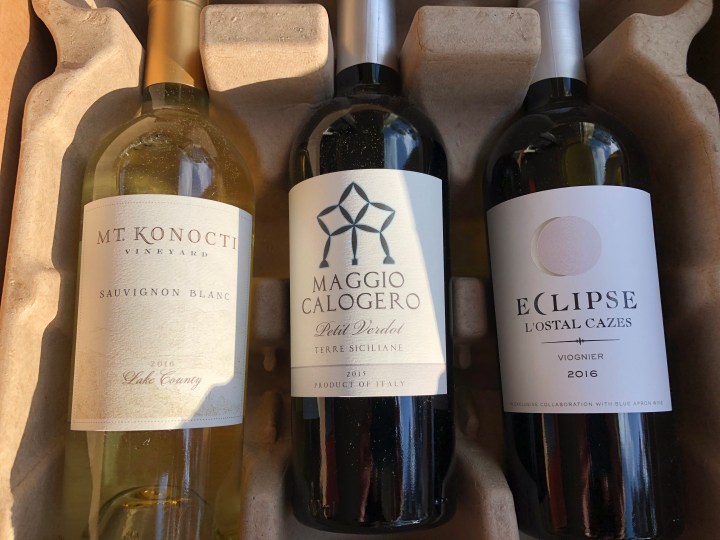
The packaging is great and keeps everything snug and secure. Keep in mind that someone 21+ will need to sign for it. Everything is in great shape when it arrives, and the packaging is, happily, recyclable cardboard.
Blue Apron Wine allows you to select your wines–you can go all white, red, or mix it up. There are lots of choices, and it’s easy to change it to suit your mood or meals of the month.
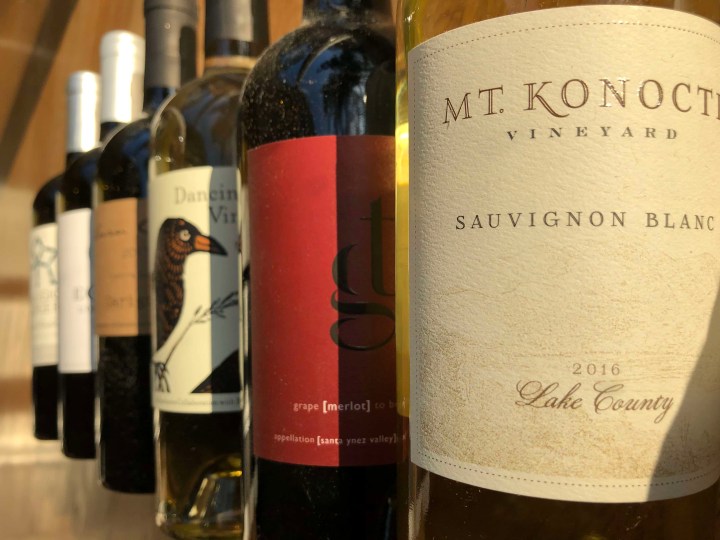
If you’re wondering what a 2/3-sized bottle looks like, here is one of the bottles with a standard-sized bottle next to it. You’ll get about 3 1/2 standard glasses in a bottle, or a generous pour plus a top-off each if you’re with a partner.
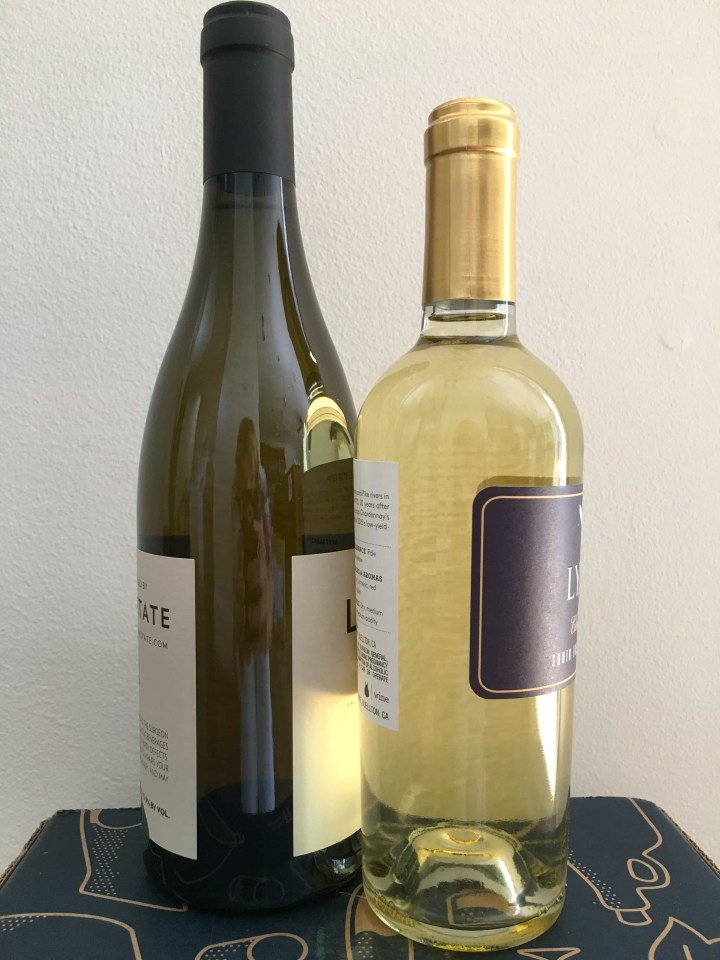
Each box comes with a great collection of tasting notes. Blue Apron tells you a little bit about the winery and how the bottle was made, plus the region at large. Because come on, you didn’t REALLY know where the Central Coast was, did you? The info details the color, body, and structure of the wine, and also gives some thoughtful food pairings for each bottle. The info is terrific – wine is not scary, and tasting it should be fun and informative. Data is your friend.
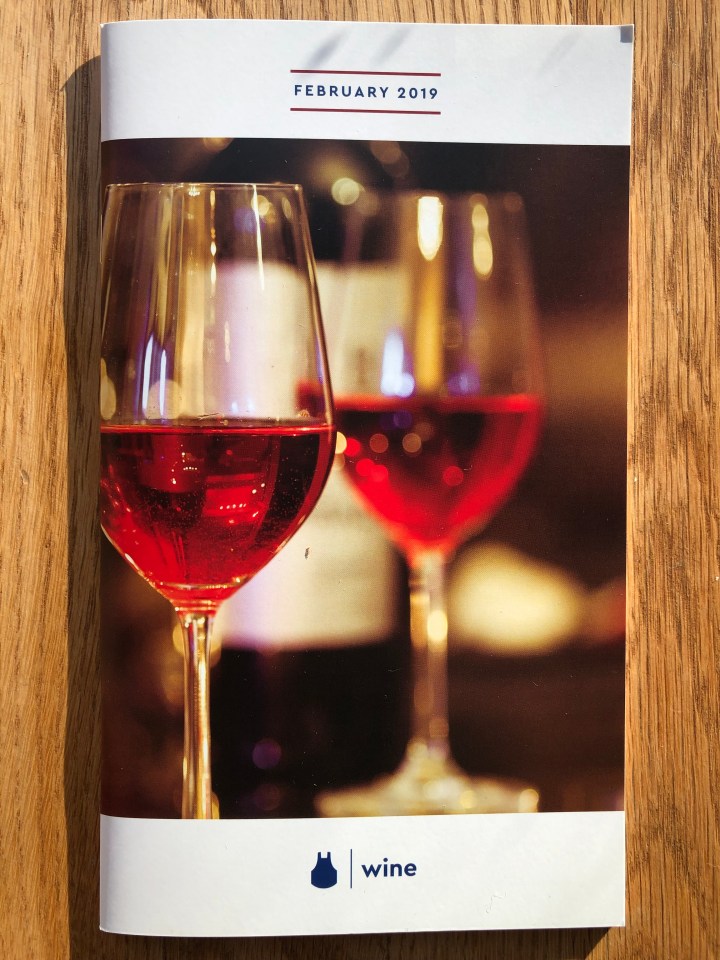
It’s February! It’s still cold and the holidays are behind you and spring is so far away! But there’s still delicious wine to see you through to the Equinox. We’ll get there together!
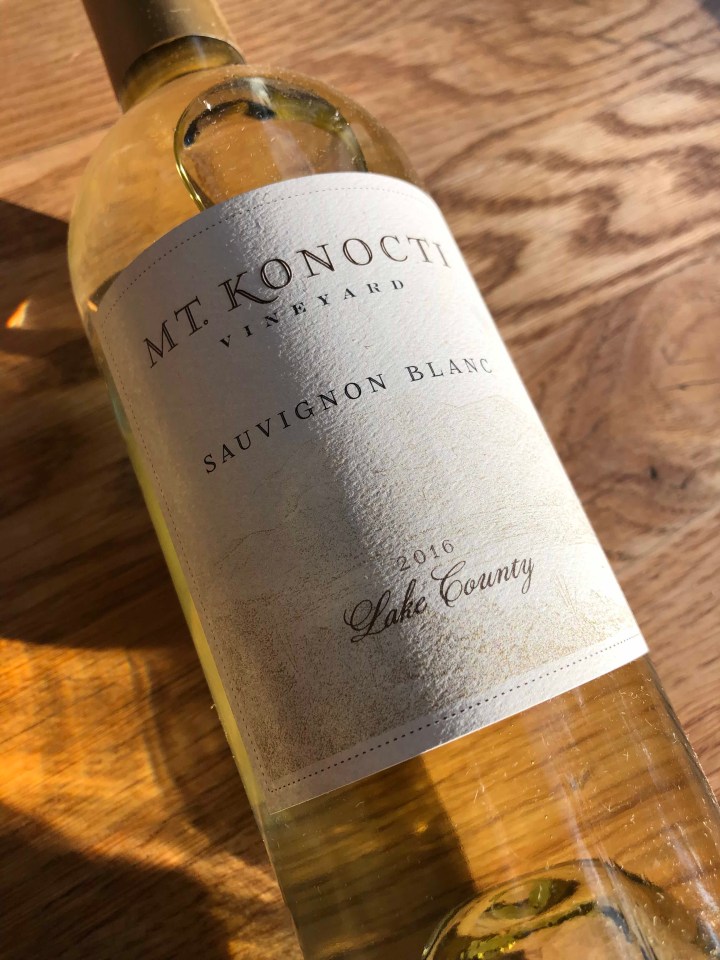
Just to remind you that Spring Is Coming, we’ll start with the springiest wine in the box, the 2016 Mt. Konocti Vineyard Sauvignon Blanc. Sauvignon Blancs can vary widely, from grassy to citrusy to fruit-salad sweet. What you like is up to you, but it’s fun to try different versions of the same varietal (see our other SB below) and think about the differences between them. It’ll make you a more discerning wine drinker, and that’s a good thing. The Mt. Konocti is on the grassy end of the spectrum, especially on the nose. It’s a nice light gold in the glass with a medium body and speedy mouthfeel. Citrus flavors dominate (not much grass on the tongue) and finish just a bit sweet with an undercurrent of that grapefruity bitterness. The finish is clean and very acidic, wiping away any sweetness you thought you might have tasted. A nice balanced wine that would go well with any light meat dish or appetizers. Make yourself a quiche (but not with asparagus, because it’s not time yet) and enjoy this wine chilled.
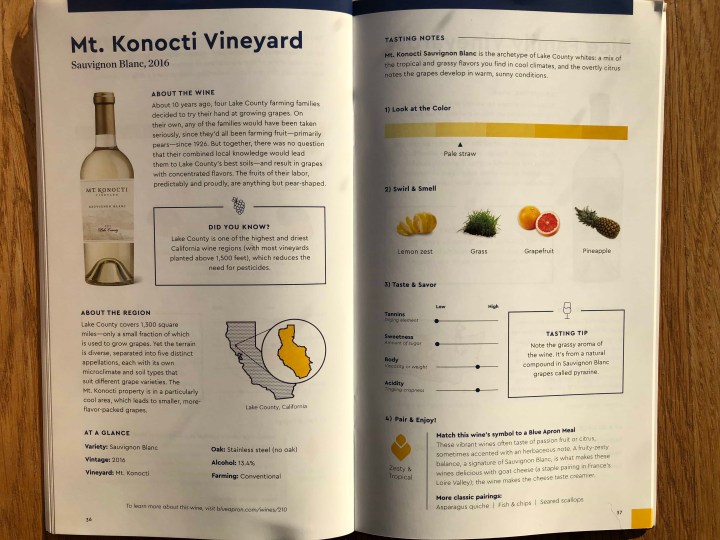
Next up is our other Sauvignon Blanc, the 2016 Dancing Crow Vineyards Sauvignon Blanc.
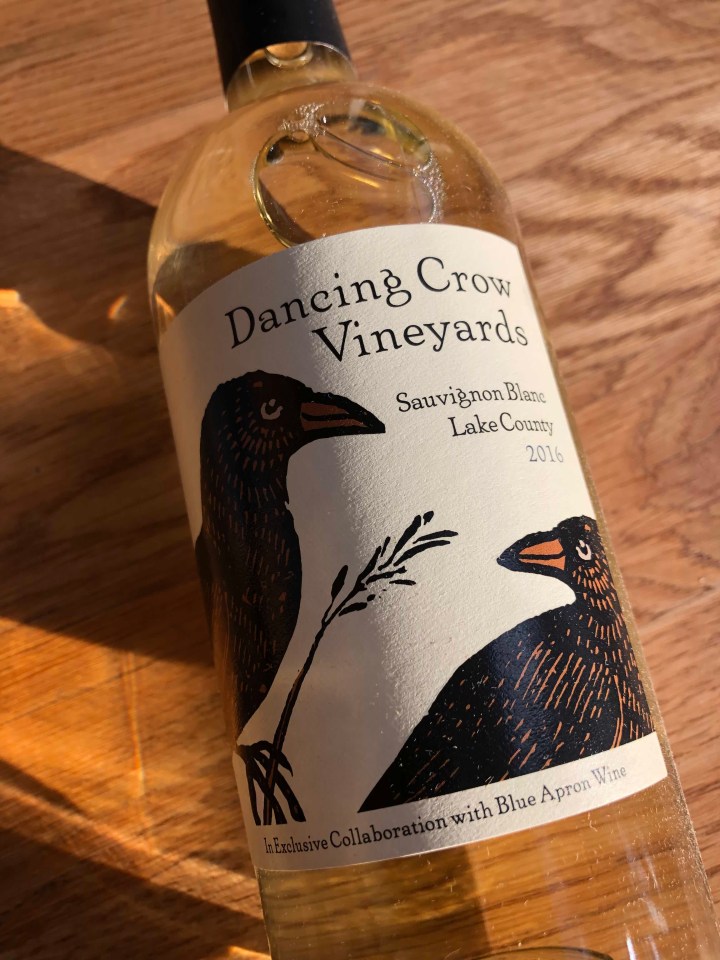
This Sauvignon Blanc is also from Lake County California, which I didn’t intend, but is fun. Talk about discernment! Tell these two wines of the same varietal and terroir apart! You’ll be ready for a sommelier exam after these two. (We actually did try them on the same night after we realized they were cousins). The Dancing Crow is very pale and very light in body, much lighter than the Mt. Konocti. It’s all citrus on the nose, with no grassy elements. The citrus will knock you over, with lime, lemon, and maybe a hint of orange at the end, but that could be the apricot flavors they reference in the tasting notes. This evaporates off your palate like it’s nothing. This SB is quite low in alcohol, only 12.3% ABV (compared to 13.4% for the Mt. Konocti), and it almost feels like a Vinho Verde or apertif wine. It’s great, a lovely light touch if you’re having crudites or maybe some nice scallops. Drink it cold.

Our last white is a good contrast to the light springiness of the Sauvignon Blancs, the 2016 L’Ostal Cazes Eclipse Viognier. It’s from the Languedoc region of France.
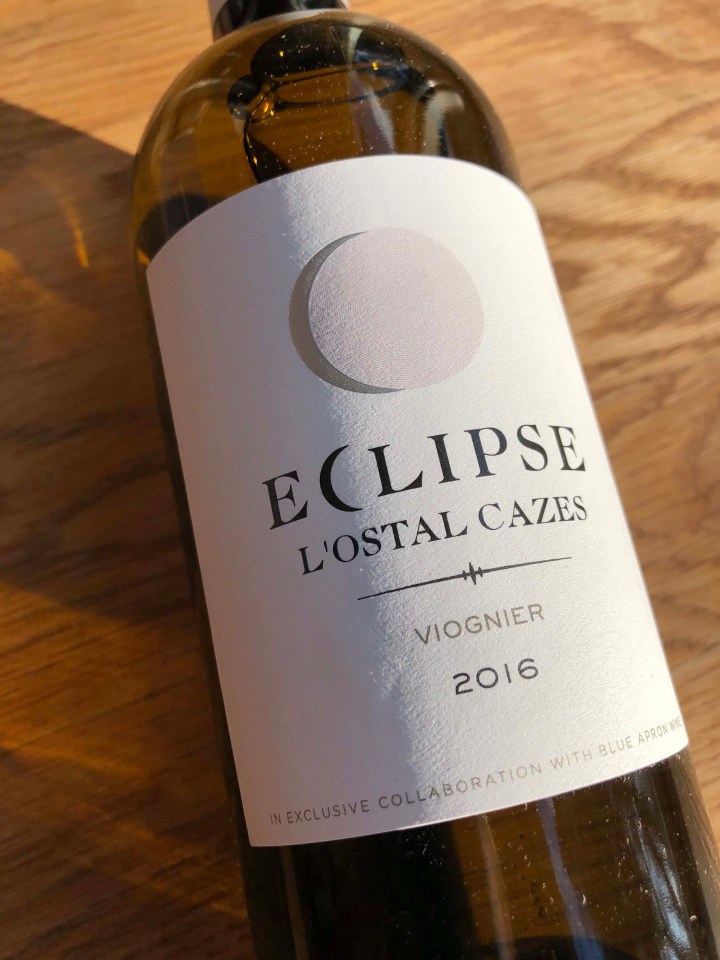
You may not have tried a lot of Viognier, but it’s a great varietal. It probably falls between a Sauvignon Blanc and a Chardonnay–it has some of the spryness and fruit that you get in an SB, but it’s heavier and more floral. It can be oaked, which makes it even more like a Chard, but this one is unoaked, so you get more of those flinty floral elements. Wouldn’t it be fun to try all three of these whites and make some notes? The L’Ostal is a medium gold with a medium body and a medium nose of flowers. Seriously, there’s honeysuckle and maybe even a little rose in there. It smells great. The flavor is peachy citrus, with a sharp little edge to the lingering finish. This wine is so good! It’s exactly what you want to drink at that backyard Easter party with the fancy flowers and the kids running around like egg-chasing maniacs. I know, Easter isn’t until practically May this year, but this wine really did remind me of those parties from Easters past. I do love the way wine reminds you of where you were when you first tried something. Like Viognier. Big ups here.
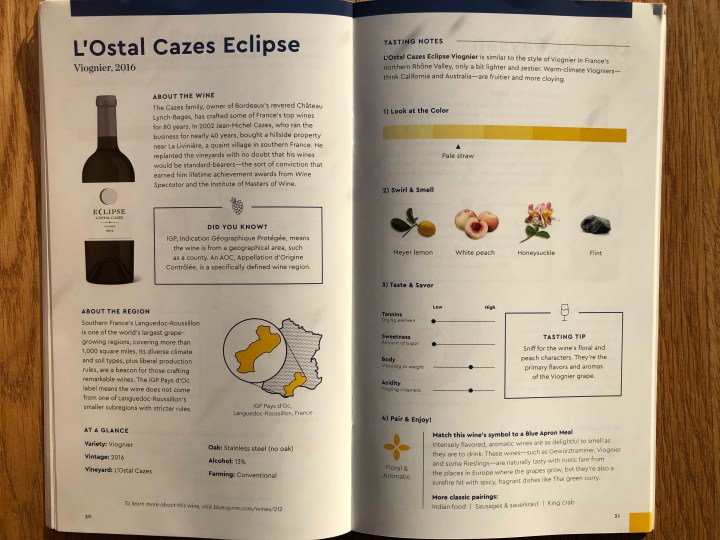
On to Italy for our first red, the 2015 Maggio Calogero Petit Verdot.
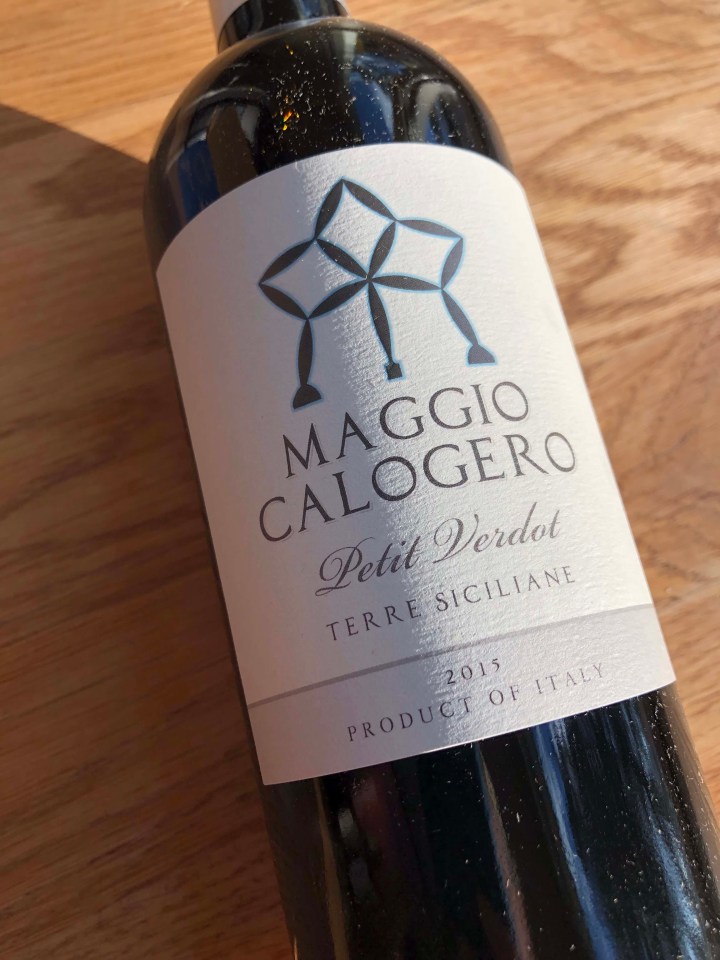
You really don’t see a ton of Petit Verdot outside of blends–it can be very tannic and harsh on its own. The Maggio Calogero is dark, dark, almost black in the glass (typical for PV), with a sluggish, heavy body and a huge nose of dark fruit and flowers. If the Viognier was like a bouquet of white, this would be a bouquet of purple. We thought this wine would probably benefit from airing out, so we poured a glass, cooked some flank steak and sauteed spinach, and then went back to it. A sip straight after pouring was super tight and tannic, with mostly those floral flavors and an almost harsh finish without any subtlety. By the end of dinner, the wine had mellowed out a lot, and you could taste those dark berries and tease out the floral elements better. It still punches you with tannins at the end, but you get a little more nuance with it. I don’t know if this would age well or not. If you like a big, challenging wine, give this one a try and see how it changes as it airs. Cool room temp to start for this one.
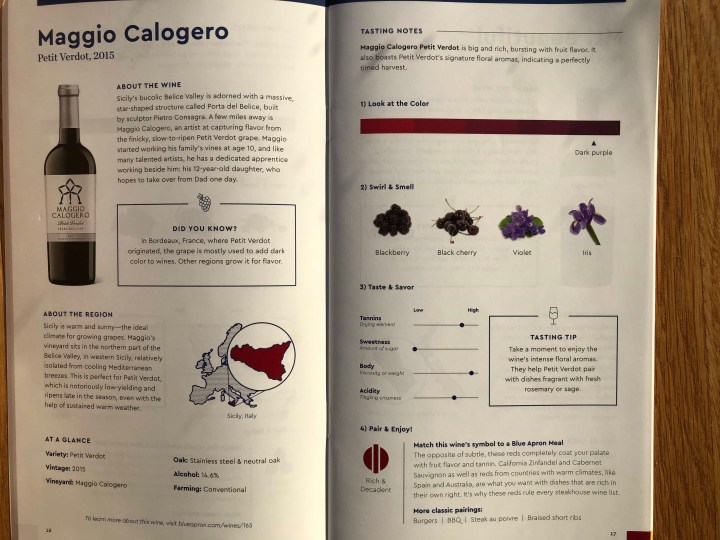
Back to California for our next red, the 2017 Lusu Cellars Carignan.
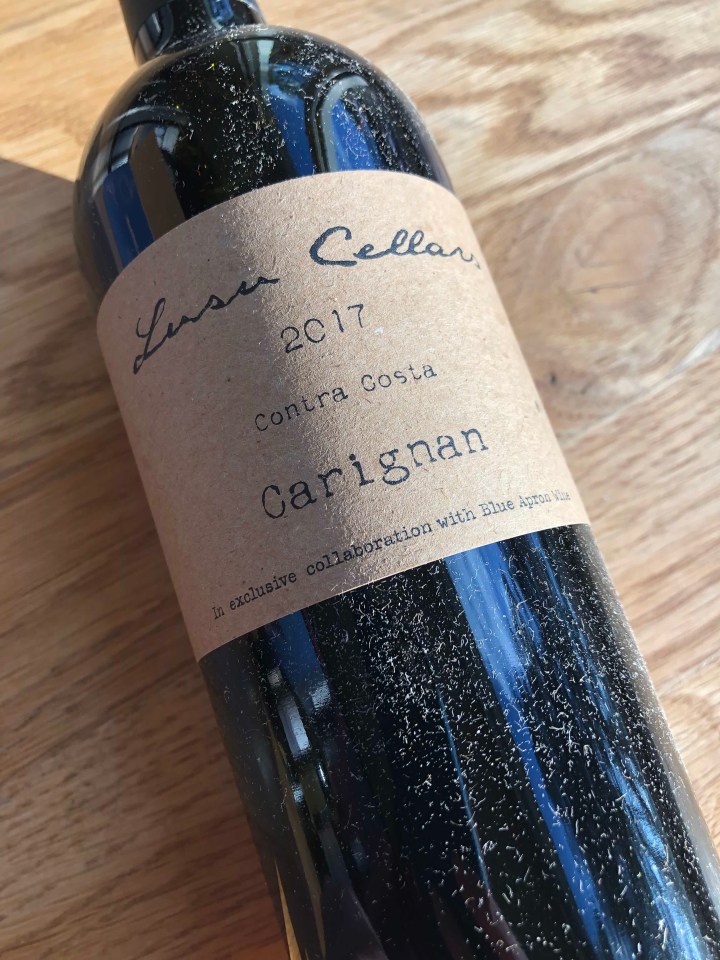
I’ve talked about Carignan before–it used to be found mostly in blends, but it’s recently come into its own as a single varietal. Carignan (done well) is a beautifully versatile wine with herbal, fruit, and floral notes that work well with many different foods, a bit like a Cabernet Franc. The Lusu cellars is a beautiful brick-red with a medium body and a slight floral nose. Sour cherry flavors lead, but they mellow quickly into smooth herbal/floral notes, with a medium herbal finish. This wine is really balanced in flavor, and there’s enough acidity and tannin at the back to refresh your palate for another sip. This was our favorite wine in this box! We had it with Sunday night pizza, but it would also be great with barbecue or a burger. It doesn’t judge you for your casual dinner. Cool to regular room temp here.
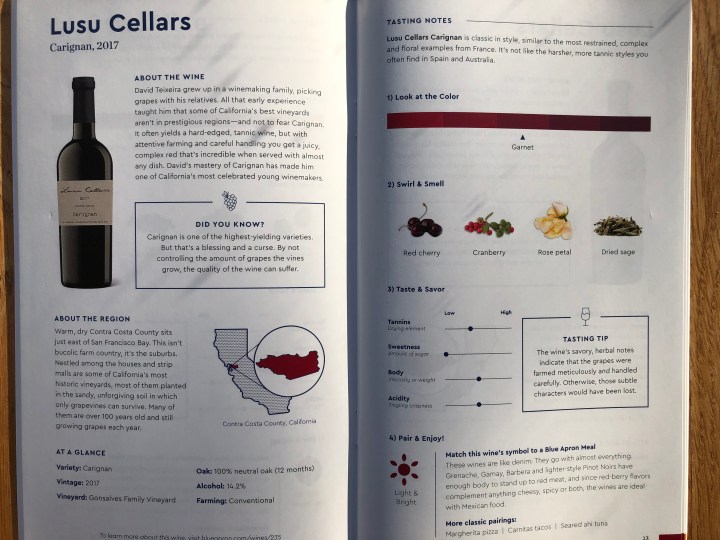
Last up, is the 2016 GTB Merlot. We reviewed a different GTB varietal recently, and it seems to be a Blue Apron label.

I like Merlot. It reminds me of graduate school parties from the 90s, where bringing Merlot meant you knew something about wine. Now I actually do know something about wine, and what I like about Merlot is that it brings dark, olivey flavors that really enhance the rest of your meal. The GTB is purple in the glass with a medium-heavy body and that characteristic Merlot nose. It’s smoother than I expected, with notes of dark red fruit and spice. I didn’t get any of the anise/licorice identified in the tasting notes. The wine finishes with less tannin than a Merlot usually has. This isn’t my favorite Merlot, but it’s easy drinking and will go great with whatever you’re serving, from black bean enchiladas to pork chops to pasta. Cool room temp is best.
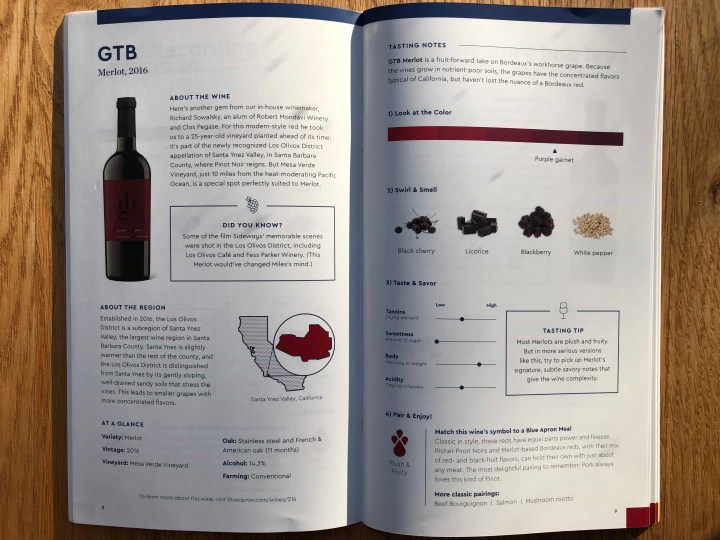
And that is February! Blue Apron was apparently also despondent about the center of winter, because the tasting notes didn’t come with any fun features or recipes this month. But don’t worry, everyone, spring will be here before you know it. Until then, enjoy these wines and stay warm!
By the way, Blue Apron has an easy system for pairing its wines and its food subscriptions, somewhat like you might have seen in nicer grocery stores — the wines are categorized by type (crisp & minerally, plush & fruity, etc.) and then that symbol shows up on the food recipes. Pair any wine of the recommended type to the food, and voila — you have a great meal!
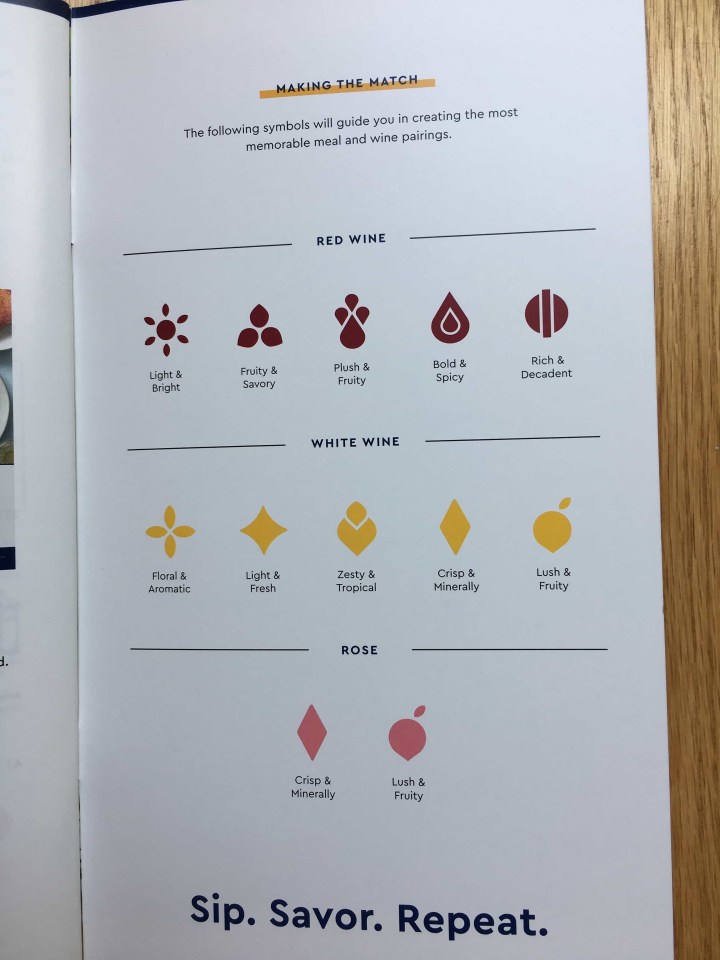
Onward to March! Did you take any tasting notes on your wines this month? Tell us in the comments below!




Comments